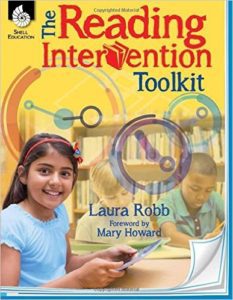by Laura Robb (names are pseudonyms)
“All we do is read a few chapters and do worksheets. We never ask questions. No discussions. I hate worksheet packets and memorizing vocab for tests. I haven’t heard what my friends are reading. I want to talk about our questions. We never talk about anything much in class.”
Sorel, an eighth-grader, wrote these words in his notebook near the end of the first semester when his teacher, Ms. Walters, asked students: What changes would you like to see in reading? The responses of most students repeated thoughts similar to Sorel’s. To her credit, Ms. Walters heard and absorbed her students’ comments. She had noticed their lack of interest and recognized the need to change. To students’ credit, they were honest and their candid comments nudged Ms. Walters to ask for coaching and risk the challenges of change. At the end of October, Ms. Walters invited me to help her bring inquiry and student-led discussions of different books into her reading curriculum.
Reading and discussing professional materials, watching videos, and having frequent conversations about Ms. Walter’s myriad questions related to planning and observing lessons, supported change. Gradually, she moved from “my class” to “our class” by negotiating with students learning expectations and deadline dates as well as offering choices in independent reading. This short literacy snapshot illustrates the power of questions as a tool that can drive changes and foster a self-evaluative stance.
Why Pose Questions?
Readers and writers ask questions. Scientists and historians ask questions. Administrators and teachers ask questions. Posing questions is a way of understanding information, data, and experiences. In addition, raising questions supports learners as they dig deeper into a topic and text. With practice, wondering can also develop students meta-cognition—the ability to think about their learning, know what they understand, and identify areas that require additional practice
Too often in classes, questioning is actually recitation where the teacher prompts students for the “one right answer” to questions he or she asks. However, to develop independent readers and thinkers, to develop analytical and critical thinking skills, students need to be in the driver’s seat when it comes to asking and answering questions.
When quality, student-generated questions define a class, meaningful learning takes place—learning that defines reading, research, collaborative projects, literary discussions, and notebook writing. As students wonder to learn, they begin to raise questions while reading and generate questions to solve problems, to research a topic, to conduct interviews, etc.
When Do Students Ask Questions?
Opportunities abound throughout the day for students to pose questions. Here are a few:
Mini-lessons: Invite students to jot questions they have while you present a mini-lesson and ask these when you’ve finished. Such questions clarify students’ understanding and help them absorb new ideas. In addition, students’ questions can offer you insights into what they do and don’t understand about a lesson. With this information, you can design interventions based on observed needs.
Teacher read alouds: Pause during your read aloud and invite students to pose questions about conflict, theme, or how events connect. Reserving a few minutes for students to share and discuss their questions shows them how much you value their thinking. You’ll also gather insights into ways students react and respond to the text; this information informs future think-alouds, mini-lessons, and interventions..
Setting goals: Help students understand that raising questions such as, Is there a strategy I should work on next? What do I have to do to reach this goal?” can improve their learning. Such questions can develop independence because they place students in charge of decision-making and developing a plan to reach a goal.
Self-evaluation: Questions can also drive students’ evaluation of their work over time. Ask them to review and pose questions about several notebook entries, their entire process for a piece of writing, several quizzes, and tests, or their participation in collaborative projects. Here’s a sampling of questions that students might ask: Did I improve? How do I know I made progress? Is there something I did that stands out? Why did I struggle? What did I do to cope with my struggles? Did I seek help from a peer or teacher if I couldn’t resolve the issue?
A result of self-evaluative questions is the development of meta-cognition, the ability of students to reflect on their written work, assessments, and collaborations. Often, the result is that students accept the need for additional practice from their teacher or a peer that can support their growth as learners, critical thinkers, and problem solvers.
Questioning the Author: Isabel Beck’s and Margaret G. McKeown’s strategy, questioning the author, provides students with questions for fiction and nonfiction texts. The questions help students link words, phrases, and ideas to construct meaning from a passage they find challenging. To question the author, students might ask: Why did the author use that word or phrase? How does the word or phrase connect to the information in the sentence or to information that came before the sentence? How does the paragraph or section connect to the title? The theme or the main idea? The previous paragraph? I suggest you put these questions on index cards that students can access because the questions can develop independence in unpacking meaning from challenging passages. Inquiry-based learning: Before and during a unit of study, students generate questions that drive their reading, investigations, experiments, and discussions. Researchers like Jeffrey Wilhelm and Michael Smith, show that when student-generated questions steer the direction studies take, they are more engaged and motivated to learn. Inquiry fosters collaboration, understanding information, analyzing texts, and researching topics.
Students Write Discussion Questions: Teach students how to pose open-ended, interpretive questions and invite them to work as a team when reading an assigned or self-selected text. Open-ended questions have two or more answers. Verbs such as, why, how, evaluate, explain, compare/contrast can signal interpretive questions. Returning to a text to write open-ended questions deepens students’ knowledge of plot and information, but it also raises the level of discussions to critical thinking. In addition, discussing their own questions motivates and engages students in the reading and exchanging ideas.
The Teacher’s Role
Providing a model for students, one that shows them how to raise questions during diverse learning experiences is what teachers do. For most students, becoming a skilled questioner won’t happen quickly. However, turning the questioning process over to students gives them opportunities to practice and to make their studies more meaningful. Meaningful reflection by teachers and students-–reflection that considers improving questioning techniques and gathering feedback can create a learning environment that values students’ wonderings as a path to progress and independence in learning.
Laura has written many excellent books! Check out The Reading Intervention Toolkit

Follow Laura on Twitter @LRobbTeacher
Follow The Robb Review Facebook Page!
![]()













